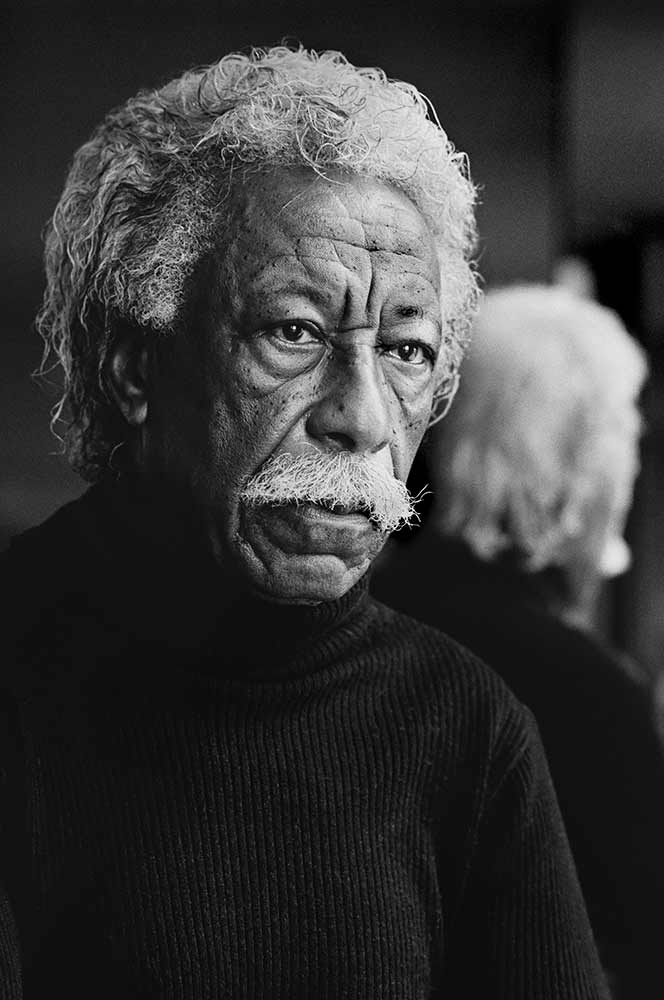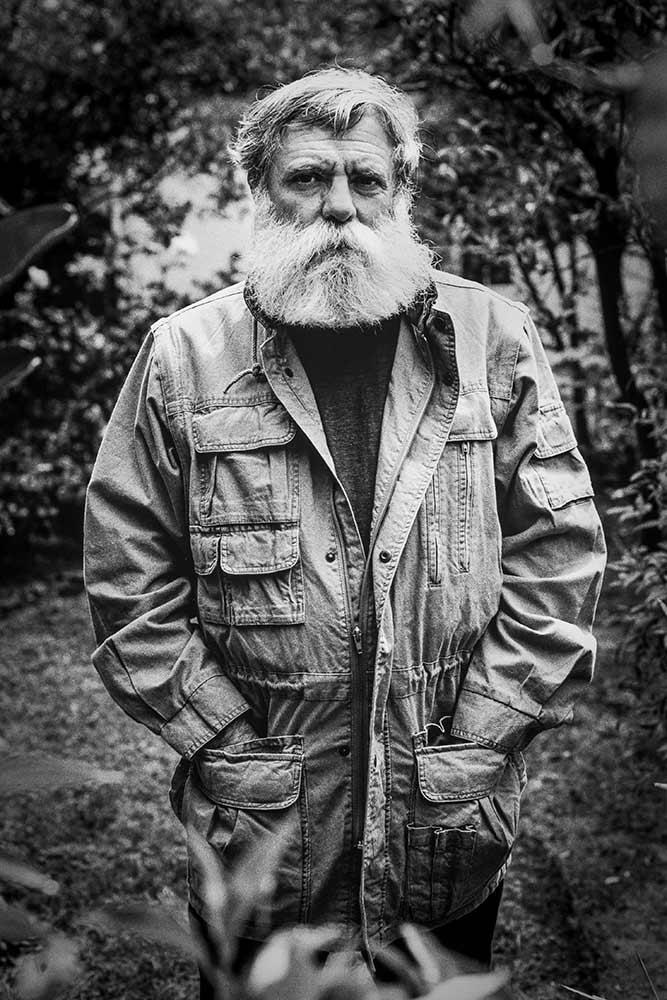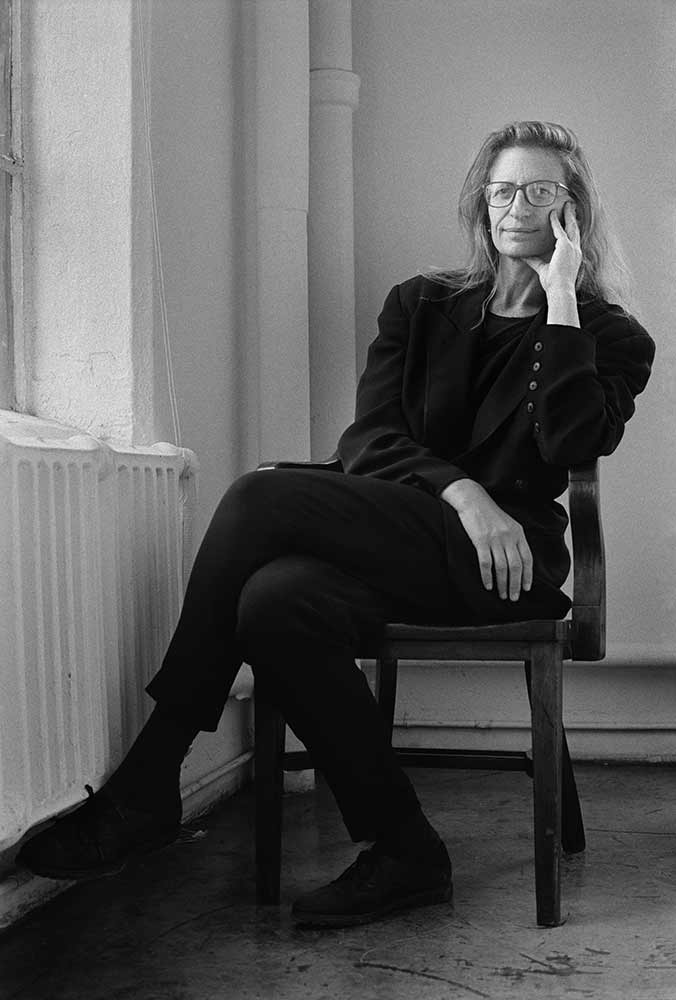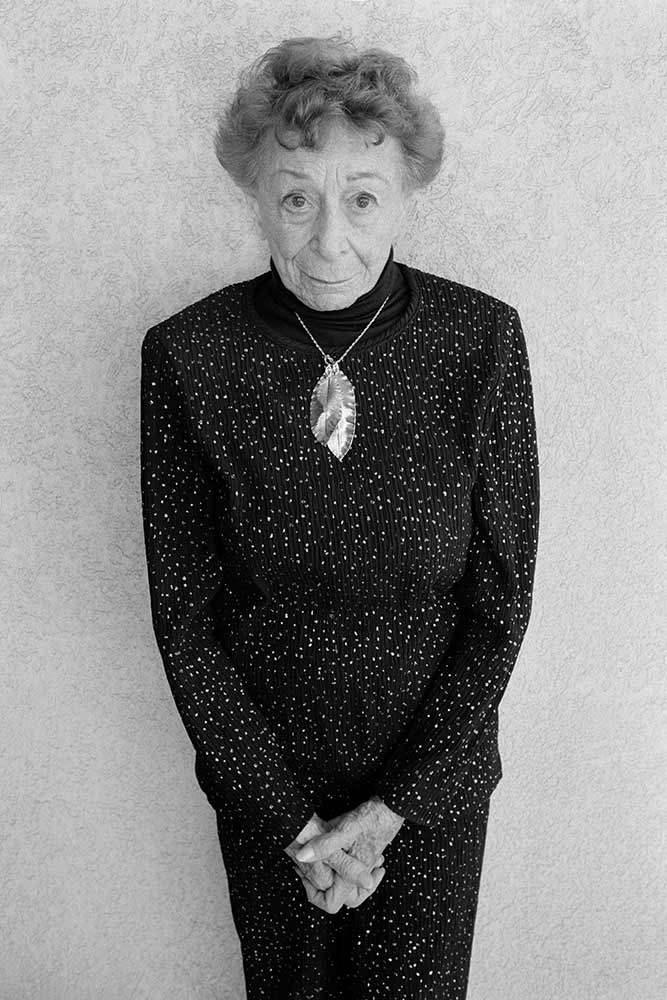Mark Edward Harris | THE CAMERA’S EYE
I have had the incredibly good fortune to learn photography and life lessons from many of the most influential photographers in the history of the medium. In the 1980s, I began to photograph and interview photographers for various magazines. This combined my love of photography and history. I didn’t know it at the time, but the knowledge gleaned from my Master’s degree in Pictorial/Documentary History – a major I created at California State University, Los Angeles – would give me the skills to dive deep into my interviews into what made these photographic luminaries “click.”
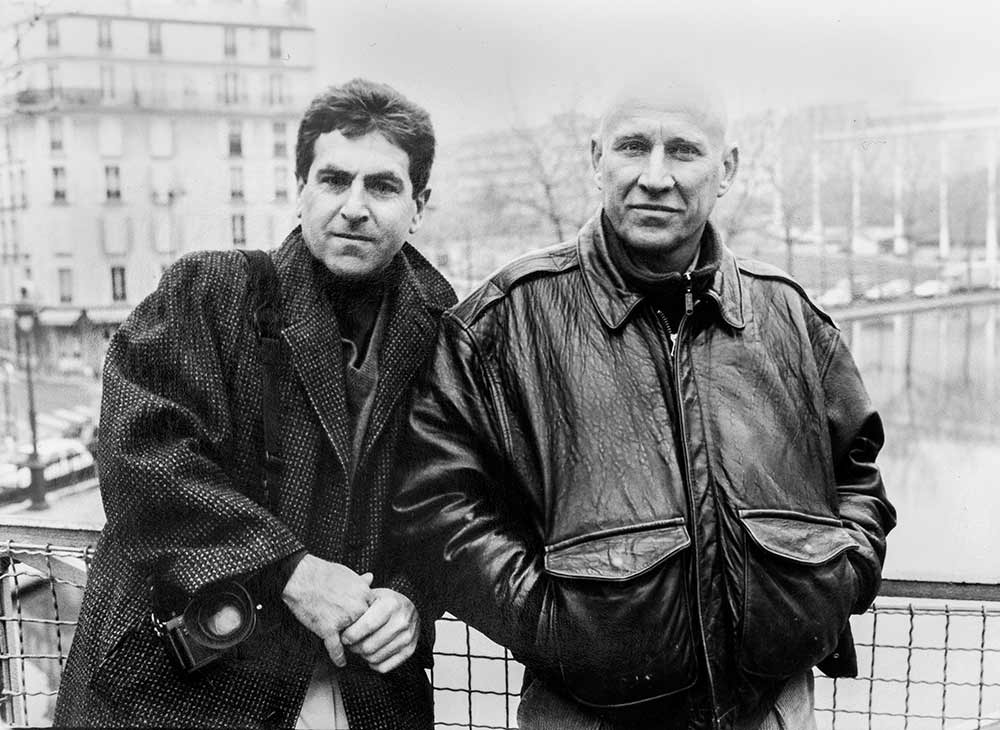
Mark Edward Harris © All rights reserved.
In 1998, my first book, “Faces of the Twentieth Century: Master Photographers and Their Work” was published by Abbeville Press in English and French editions, Images du 20ème siecle: Vingt photographes regardent leur temps, and a German edition, Gesichter des zwanzigsten Jahrhunderts: Meisterfotografen und ihr Werk publish by Weingarten.
In the book, I presented my portraits of twenty photographers along with excerpted interviews illustrated with five of their images. The book won the “Photography Book of the Year” and “Best of Show” awards at the New York Book Festival.
I have gone on to publish nine more award-winning books, including “The Way of the Japanese Bath,” “Wanderlust,” “Inside Iran,” “North Korea,” The Travel Photo Essay: “Describing a Journey Through Images and The People of the Forest” (about orangutans) as well as continuing my “Photographer Portrait” and interview series which now numbers in the hundreds. I would like to share a few backstories and some words of wisdom by these lenswomen and lensmen, many of whom now reside in the pantheon of photography.
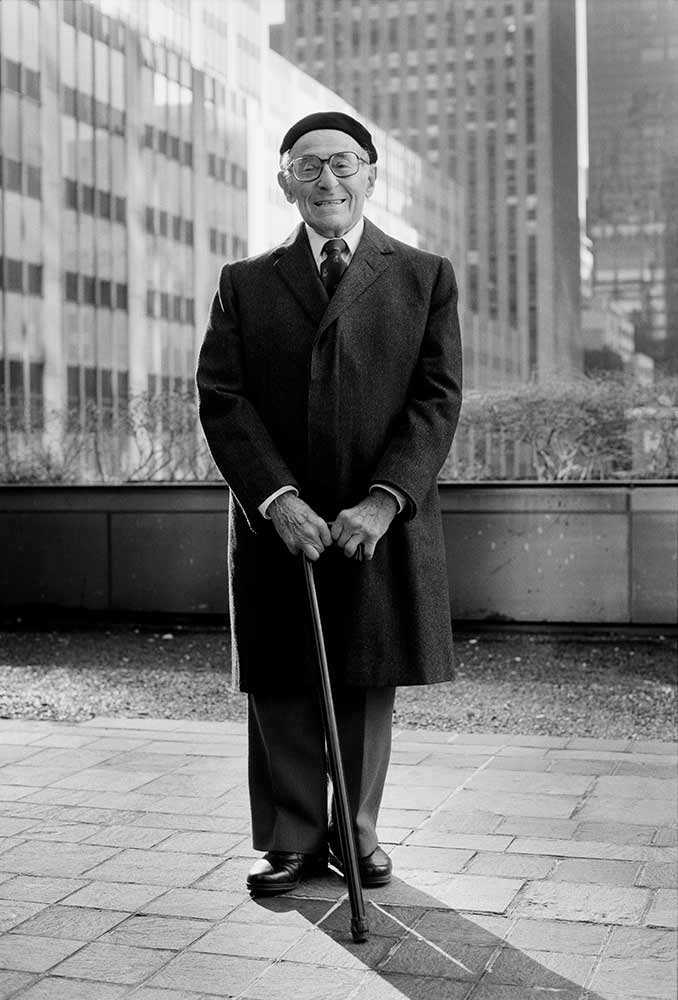
Mark Edward Harris © All rights reserved.
I photographed the legendary LIFE magazine photographer Alfred Eisenstaedt (1898-1995) on the terrace of the Time & Life Building in 1993 on his 95th birthday with a Nikkor 85mm lens attached to my Nikon camera body using a large silver reflector camera right. Before I depressed the shutter, Eisie advised me, “Always check a gentleman’s tie before taking a picture.” So, of course, I followed his sage advice and took the larger concept behind his statement to check the person’s wardrobe, hair, and so on before my lens. The devil is in the details, as the saying goes. When Eisie passed away two years later, the image was used in LIFE as a final page tribute with the caption written by the editor, “This is the master’s choice, Eisie’s favorite photo of himself.”
While Eisie’s frozen moment of the sailor kissing the nurse in Times Square at the end of World War II is his most famous photograph, I am most drawn to his powerful environmental portrait of a woman sitting on a pile of rubble with her young son in Hiroshima less than a half year after an atomic bomb detonated over their city.
Eisie was able to capture the quiet strength and fortitude of this woman. The hair across her face conveys a cold wind blowing through the devastating scene that I feel every time I look at an image exposed more than 75 years ago.
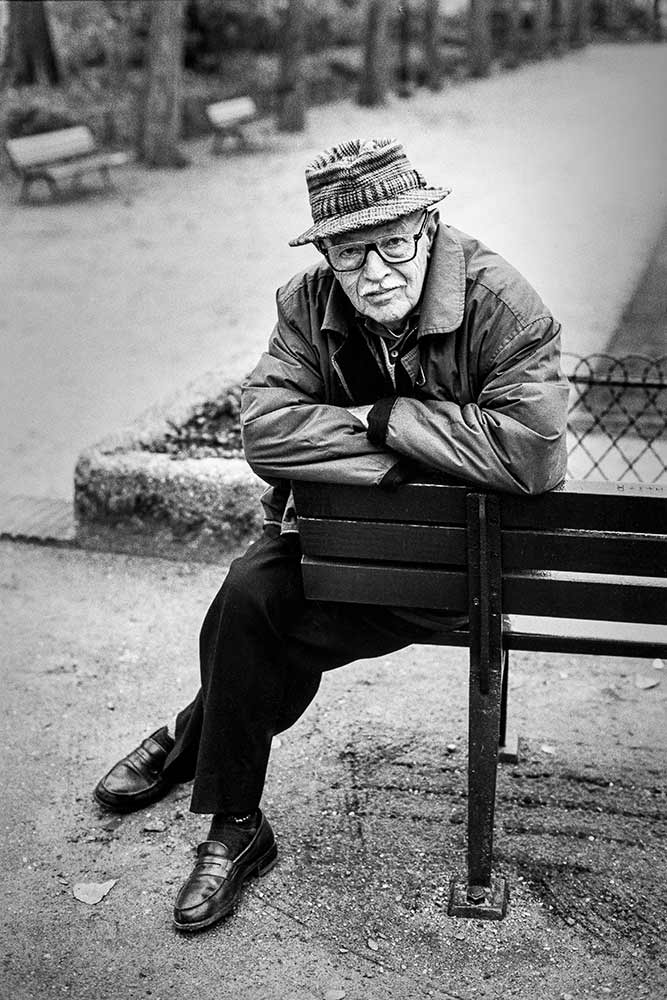
Mark Edward Harris © All rights reserved.
Another legendary LIFE magazine photographer, Gordon Parks (1912-2006), had a significant impact on me on a number of levels. His book, “Voices in the Mirror,” is a road map on how to live life to the fullest and not get dragged down by whatever obstacles might be placed in your way. My portrait of Parks in his New York apartment was inspired by this powerful autobiography.
My interviews with Parks included a fascinating discussion as to how his first photo essay for LIFE, published in 1948, came about. It serves as an example of a photographer suggesting a project to a magazine instead of the other way around, or as Eve Arnold (1912-2012) told me “Waiting around for the phone to ring.” It also gives great insights into the inner workings of a publication’s editorial office as well as how one project can lead to another.
“I walked into Wilson Hicks’ office,” Parks recalled; Hicks said, ‘How the hell did you get in here? What do you want in here?’ Wilson was a very tough editor that a lot of people hated. I said, ‘I want to show you some pictures.’ I had gone up to somebody and asked, ‘Where’s Mr. Hicks’s office?’ I knew I was going to get thrown out, but then John Dille, who was editing documentary assignments, came into the office and saw some of the stuff I had done for the FSA (Farm Security Administration). He was looking for a good strong documentary piece.
So Wilson asked, ‘What do you want to do?’ I proposed a story on a Harlem gang, not because I wanted to do it but simply because I felt I had to excite this man. I had to say something with my camera that none of the white photographers could do to penetrate a Harlem gang. After being convinced by John Dille, Hicks said yes.”
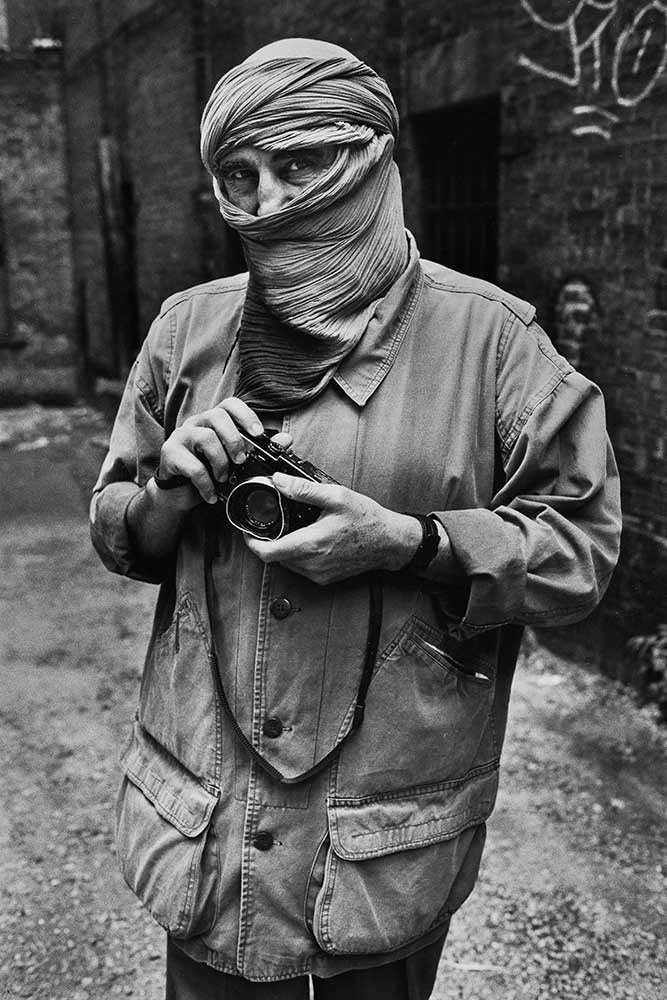
Abbas. New York. USA.
Mark Edward Harris © All rights reserved.
The Harlem gang series led directly to Parks’ next assignment for LIFE in 1949 to create a photo essay on the island of Stromboli to illustrate the complex love story between Ingrid Bergman and Roberto Rossellini. Parks recalled, “Roberto had become sort of a tyrant on the island and kicked all the newspeople out because everybody was condemning Ingrid….The whole world seemed to be against her for leaving her husband and daughter and going off with Rossellini. She was pregnant at the time too. The film was falling apart….Roberto was angry with all the newspeople. They had to have somebody they could trust.
Ingrid thought she could trust me. She had seen my pictures of the Harlem gang series in LIFE and thought they were sensitive, so that’s why I was invited.”
Parks describes how his most famous image from the photo essay came about: “I was taking a portrait of her on one side of the island, and these three women came along dressed in black. They were curious about me and Ingrid and what we were doing. They just paused for a moment, and I took advantage of that moment. I think the picture is symbolic of what Ingrid and Roberto felt the whole world was thinking.”
When it comes to a discussion of photographers creating powerful photo essays and equally powerful portraits, Mary Ellen Mark (1940 – 2015) is a must mention. Among her masterful photo essays were Streetwise, Indian Circus, Twins, and Falkland Road.
During one of our conversations, she shared her photographic raison d’etre. “I think your whole life, I mean all the experiences you’ve had combined, has an effect on you and makes you the kind of person that you are as an adult. They certainly express themselves in your work, whether you’re a musician, photographer, painter, or whatever.
When I was a child, I went on a field trip to a mental hospital. It was incredible. Also, my father was in and out of mental hospitals. It must have led to my interest in mental hospitals. I’m interested in the guy that doesn’t have all the breaks in life and the people who live on the edge. They don’t depress me.
I’m not saying that their lives are wonderful, but they have so many incredible qualities. I don’t photograph them because I feel sorry for them. I photograph them because they have a certain passion and humanity that is really interesting to me. I would like my pictures to be a voice for them.”
While Eisie, Gordon, and Mary Ellen worked in the present, Spanish photographer Cristina Garcia Rodero (1949-present) was and still is interested in capturing hints of her country’s collective past, focusing on rituals and traditions that date back hundreds and in some cases, several thousand years. “I’m working with a different time schedule than everybody else. I’ve never been a news photographer. Those people are dominated by the present. There is a rejection by many Spaniards that old Spain, the hidden Spain as the one that has no culture when it is really a school, a source of great richness. We roam the world, and very often, we don’t know our own country. So I had the idea of doing a whole general work on Spain which became the definitive decision of my life. Spain has a very rich history and diversity because of the many cultures that have shaped it – the Celts, the Iberians, the Muslims, the Carthaginians, the Moors, the Greeks, and the Romans have all left their mark.”
Digging back into history, the words of Roman orator Marcus Tullius Cicero, “Ut imago est animi voltus sic indices oculi” (The face is a picture of the mind as the eyes are its interpreter) can be interpreted as “The eyes are the window to the soul.” No one can penetrate through that portal more effectively than New York-based Albert Watson (1942-present) and Chicago-based Sandro Miller (1958-present). Both often use strobes or continuous sculpted lighting for the most intense interpretations of their subject’s visages. I have had the honor and privilege to see both at work as well as partnering up with Sandro to teach workshops in India, China, and the United States. Both Albert and Sandro often use black foam-core and flags to detract light, creating stronger shadows and more contrast.

Watson considers his ideal studio to be, in essence, a black box. “A lot of the studios you go into are white. It’s nice aesthetically, but it’s not the best. The light bounces around, hitting walls, an air conditioning vent, and so on. If they were painted black, then it would be a non-issue.
I prefer that the light I’m dealing with is the light I created, not any from an arbitrary wall that someone painted white that’s six feet away…I want total control of the light. The majority of photographers today use softboxes because basically everybody looks quite nice lit by one. But then you don’t get as powerful a result.”
Sandro’s approach is equally unwavering: “I’m always looking to be really intimate and trying to get through the eyes to the soul of my sitter.” He feels that he can’t mold the subject like clay from a distance. “When I start pulling away with a longer lens, I’m losing that intimacy with my subject. I like to put my hands on their shoulder or slightly adjust the angle of their face with a gentle movement.”
These minor adjustments make major impacts on the final result. The subject’s head has a light fall exactly where Miller wants it, usually just in or out of a shadow for dramatically different looks.

Mark Edward Harris © All rights reserved.
“I rarely use more than two lights, usually Profoto, and often just one light that will illuminate both the subject and the background. I’m also starting to work with Stella’s as a constant light source. Either way, I then begin taking light away and sculpting the light using gobos and cutters, and things that will help me shape the light on the background and shape the light on a person’s face and body to get just the shadows and curvature of the light that I’m looking for.”
One of Sandro’s most memorable series is “Malkovich, Malkovich, Malkovich: Homage to Photographic Masters.”
He reproduced 62 historical images by photographers who most influenced him in stunning detail, all with the leading characters played by John Malkovich. Among those Malkovich metamorphosed into was Winston Churchill by Yousuf Karsh (1908-2002).
In Boston, I talked with Karsh about how his most famous portrait, that of the British Prime Minister who led his country through the darkest days of World War II came about. “He was the greatest man of the twentieth century, and everybody wanted to photograph him. After meeting with President Roosevelt in Washington, he came to Ottawa to address the Canadian Parliament the next day. My friend and patron, Prime Minister William Lyon Mackenzie King, knew I’d be very interested in photographing him and told me he would put time aside for me to photograph him. He invited me to come early and watch the speech. After the speech, Mackenzie took me to the library of the speaker in the house of Parliament. When Churchill walked into the chamber, they gave him a good cigar, lit it, and left him to me. The night before, I had set up my lights and camera. He didn’t like the idea. ‘Why wasn’t I told!’ I congratulated him on his electrifying speech and told him that I hoped to make a portrait worthy of this historic occasion. He puffed at his cigar with a mischievous air and said, ‘Okay, you can take one.’ I ended up taking four. He was delighted by the results. I, by choice, did not photograph him with the cigar, which I felt would have distracted from his greatness. I held out an ashtray, but he would not dispose of his cigar, so I went behind the camera and ensured that everything was technically all right. I approached him again and ever so respectfully said, “Forgive me, sir,” and plucked the cigar from his mouth. After allowing me to take three more photographs, he walked over to me shook, my hand, and said, ‘”You can even make a roaring lion stand still to be photographed.'”
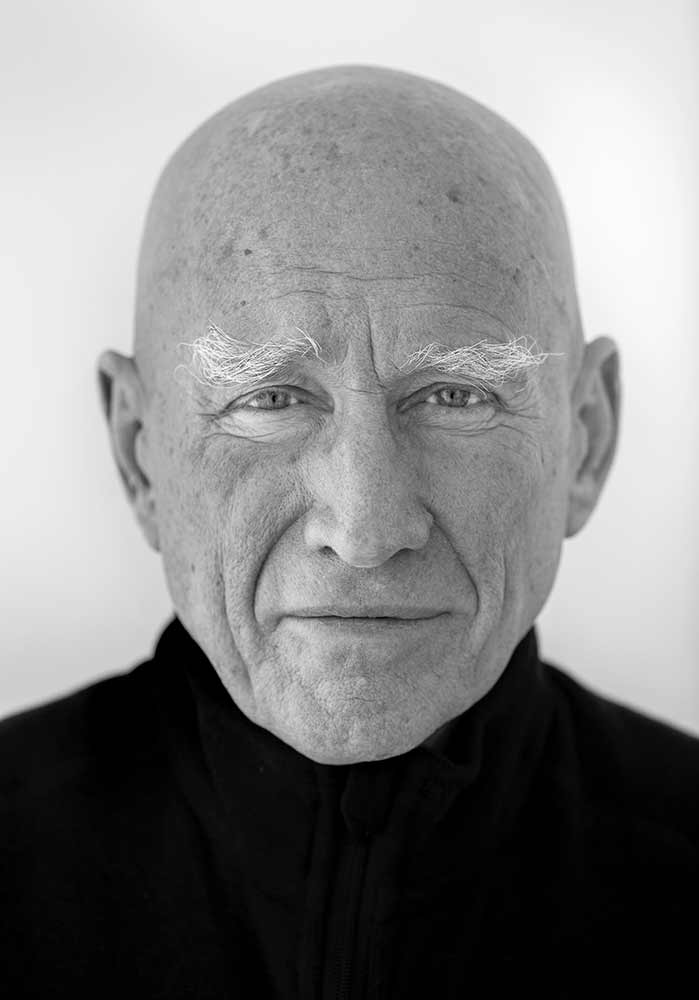
Los Angeles. USA
Mark Edward Harris © All rights reserved.
Brazilian-born, Paris-based Sebastiao Salgado (1944-present) reveals his deep concern for the people and places before his lens in every frame. His background as an economist for the International Coffee Organization made him acutely aware of the financial stresses that result in human struggles from mass migrations to wars. “We must learn to have respect for others, as well as for nature and the planet. We’re still young in this urban society. We’ll disappear as a species if we don’t learn. But I have hope.” In order to save our planet from the human-made pollutants that bombard it, Salgado suggests, “We don’t have to go back to the Stone Age; we just have to learn how to be more environmentally friendly.”
My photographer interviews have covered virtually every genre of photography, from Salgado’s documentary black and white work to the vibrant, often fantasy work of David LaChapelle (1963-present), who I interviewed and photographed at the Chateau Marmont in Hollywood in the 1990s.
He articulated his approach:
“I’m really interested in photographing the culture today – as it is right now and the people that make up that. The Pamela Lee’s even, the Daniel Day Louis’s, the Leonardo DiCaprio, the Drew Barrymore’s. The people that are making the films, the movie stars of our time. This is my personal work. I find so many photographers who put themselves in these compartments, Fine Art versus commercial. Time will tell who is an artist and who is not; I’m too busy taking pictures to be worried about the label commercial photographer or whatever people want to call what I do. “Commercial Photography” sounds hideous, it sounds like you’re photographing a bottle of Ajax or something, but that’s what people call me. But this is what turns me on….They are a document of our time in a weird way, but they are also escapist and entertaining in their own right.”
LaChapelle added, “I don’t think something has to be ugly or gritty to be valuable. There is this idea that photography has to be for political content or social content or comment and concept. That it has to be either banal or cold, ugly, gritty, real…I believe that you can be ambiguous enough to have beauty and make a statement simultaneously and talk about surface and depth in the same image. It’s there if you want it, and it doesn’t have to be there too because it also can be entertaining.”

For more than six decades, Arnold Newman created environmental portraits of the greatest names of his time, from Dali, Picasso, and Stravinsky to Eisenhower, Kennedy, and Oppenheimer. I asked how he developed his signature style of environmental portraiture. “I was rebelling against what I had to do in these studios.
I wanted to show where a person lived, where he worked, but not only that, it had to be a creative image. Not just a photograph with some things in the background, but it had to add to the composition; it had to add to the feeling, the understanding, the whole works. It had to be one creative whole that said everything possible about that person. I also felt that it had to first be an interesting photograph no matter who the subject was. Just to do a portrait of a famous person doesn’t mean a damn thing.”
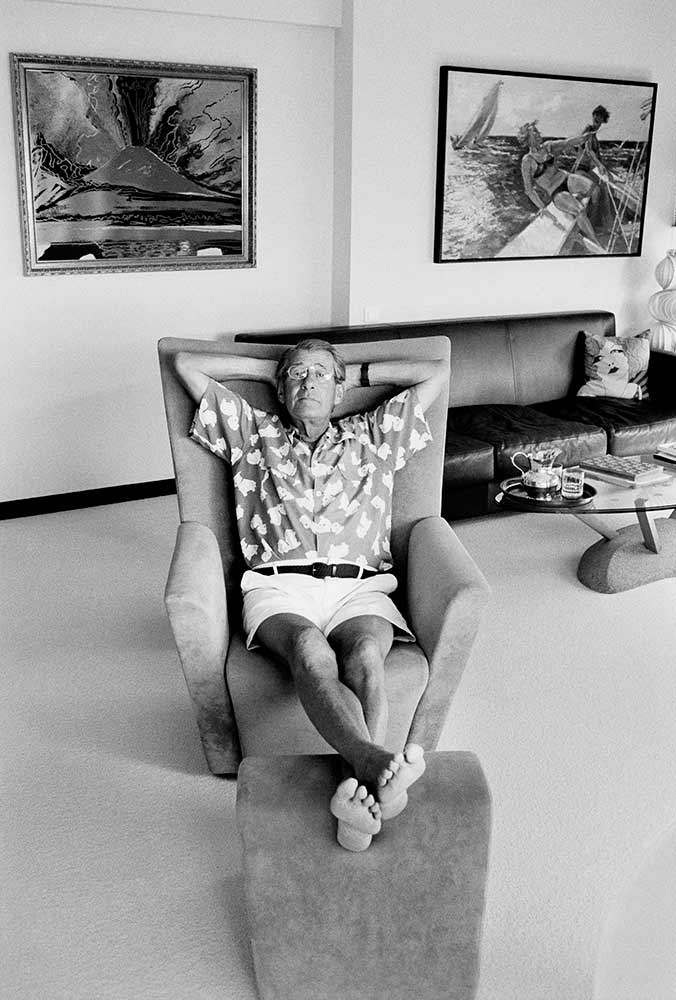
Mark Edward Harris © All rights reserved.
During my interview with Helmut Newton in Monaco in 1995, I asked him where his ideas for his often provocative work came from. “I see things…I have a pile of newspaper clippings. I’m very interested in the paparazzi. I’m very interested in daily news pictures. I’m the most down-to-earth, realistic person you’ll ever meet. I don’t have any fantasies. I just keep my eyes open and my antennas up, and I see what goes on around me.
My ideas come from daily happenings, what I read in the newspaper, what I see when I go out, and a lot of it comes from literary references from stories I’ve read. Ever since antiquity, people have been writing about, painting, and drawing sexual acts.”
While most professional photographers fall into categories such as documentary, portrait, fashion, nature, architecture, travel, food, automotive, product, and fine art (which can be further broken down into sub-categories), there are photographers such as Jeanloup Sieff (1933-2000) and Nobuyoshi Araki (1940-present) who refuse or refused to be categorized.
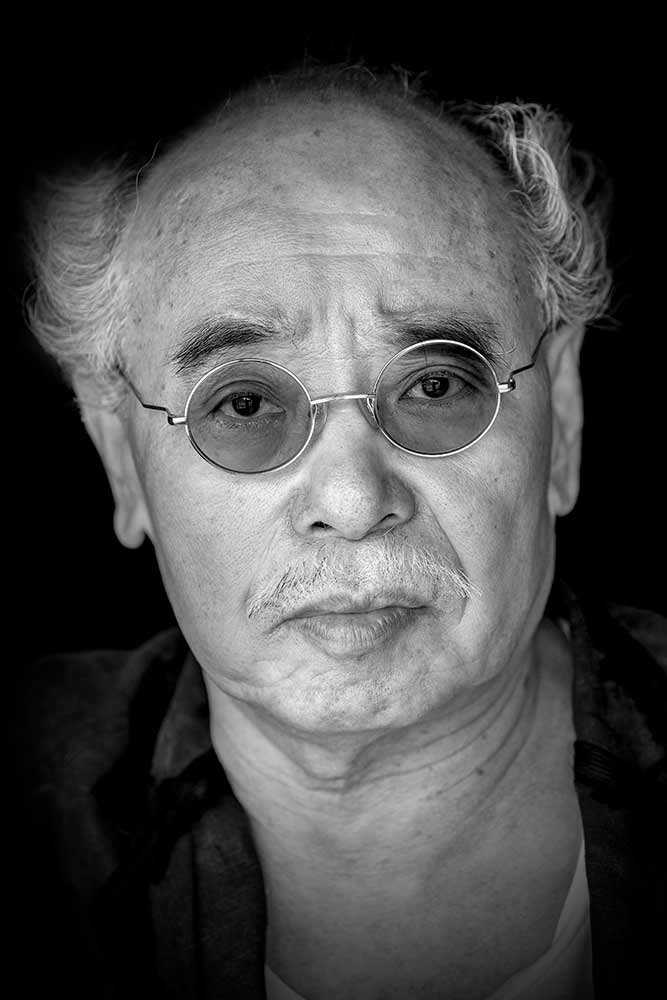
Mark Edward Harris © All rights reserved.
Araki is perhaps the most prolific photographer in the history of the medium when it comes to books, with more than 500 bearing his name, including Tokyo Lucky Hole about the sex district of Kabuki-Cho. While he’s most famous or infamous for his nude work, his oeuvre spans far wider.
Over cocktails in Tokyo, he told me why. “My explanation is very simple. I shoot everything since I think of my photos as the diary of my life no matter what the subject is – nudes, townscapes, my daily life, everything. Life itself contains many aspects.
Furthermore, the world itself is constantly changing. I’m just shooting it. I’m not trying to do something new, but I just flow with the times. So it is not that I come up with new ideas, rather the world is overflowing with ideas, and I’m just picking them up”.
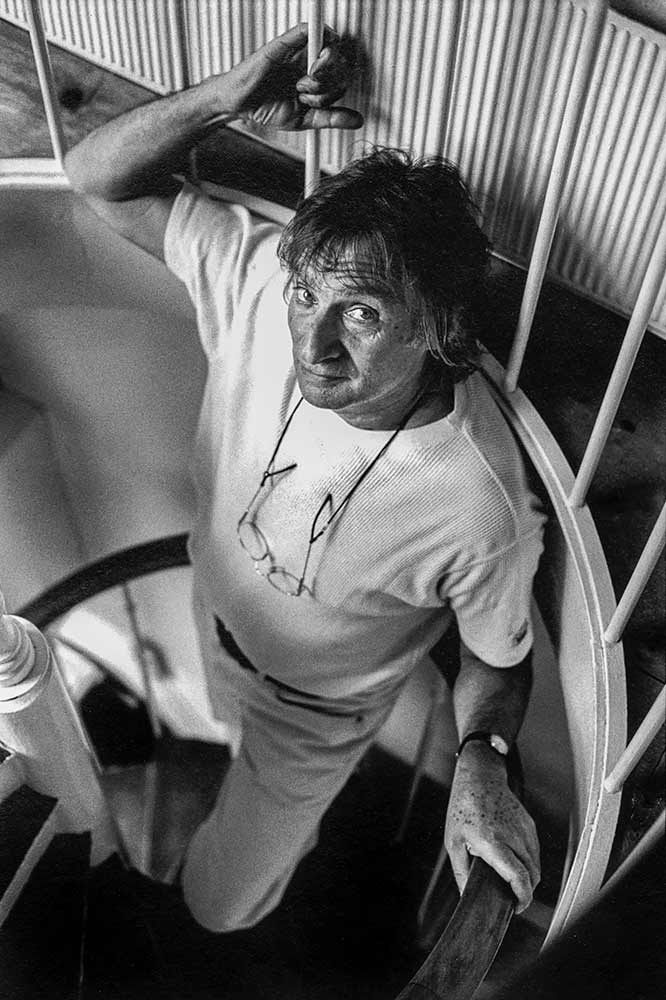
Mark Edward Harris © All rights reserved.
In Paris, Jeanloup Sieff gave his reason for a similar approach. “What is important is not the subject but the eye, the way it is seen by the photographer…a photograph is related to emotion. Yesterday I photographed fashion. Today I did a portrait. Tomorrow I’m going to do a landscape in the country. Sometimes the nude is in the landscape; sometimes, it is a portrait. Every day I do different things, but always something that I’m interested in.
“June 8, 2022, will mark the 50th anniversary of Nick Ut (1951-present) depressing the shutter on the outskirts of Trang Bang, Vietnam, to capture one of the most important photographs of the 20th century. What came to be called “The Terror of War” earned Ut the Pulitzer Prize and countless newspaper and magazine covers. When I first met Nick in the late 1990s, I positioned him in his home/office so that the environmental portrait I wanted to create would have his historic image in the scene but not dominate it.
I got the desired results using a fairly wide lens, a medium/shallow depth of field, and a silver reflector camera/left to bounce back some window light.
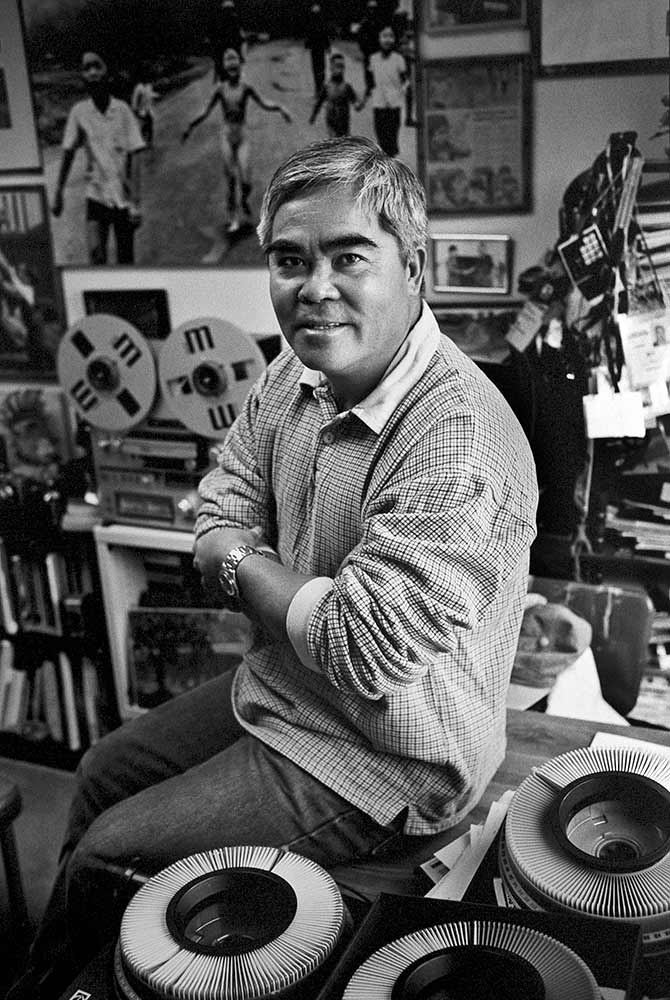
Mark Edward Harris © All rights reserved.
Ut started his career in the Associated Press darkroom in Saigon. He recalls, “I learned so much from working in the darkroom. I processed the film for all these famous photographers from around the world. I kept in mind that I had to learn every photographer’s style. Working in a dark room, you’re really in contact with photography. If you make a mistake in film, you really see it and learn from the mistake. There is more of a distance now with digital.”
Just as Nick learned from the AP photographers as their images would come up in the developer, we can all learn from the work of past and present masters regardless of our level. All it takes is for us to empty our mental cups and allow new knowledge to pour in. We also don’t need to step on a plane or even get in our car to find a great photo opportunity.
As Annie Leibovitz (1949-present) told me while discussing concept development, “Sometimes photographers overlook the thing that is right in front of them, it just seems too obvious.”

